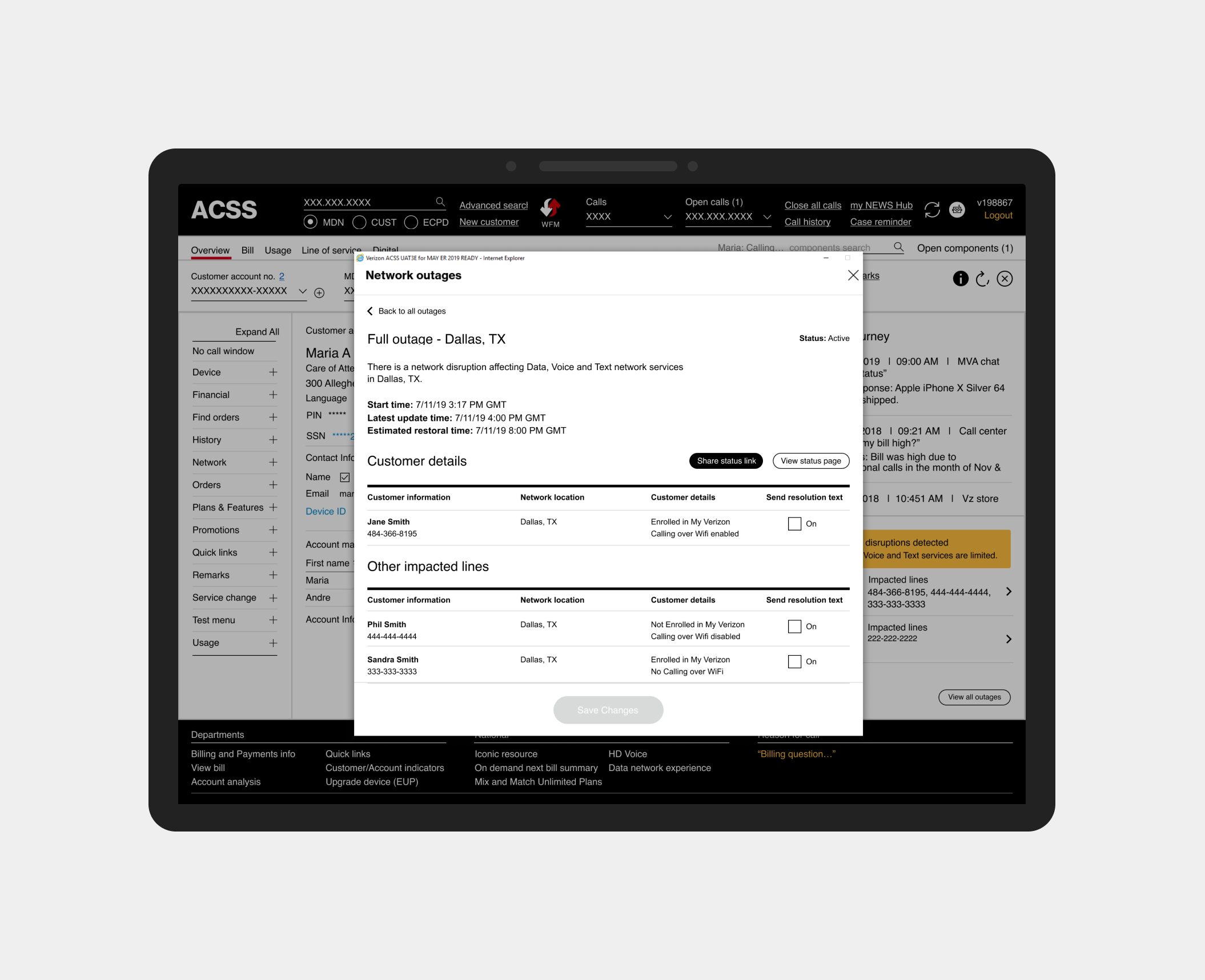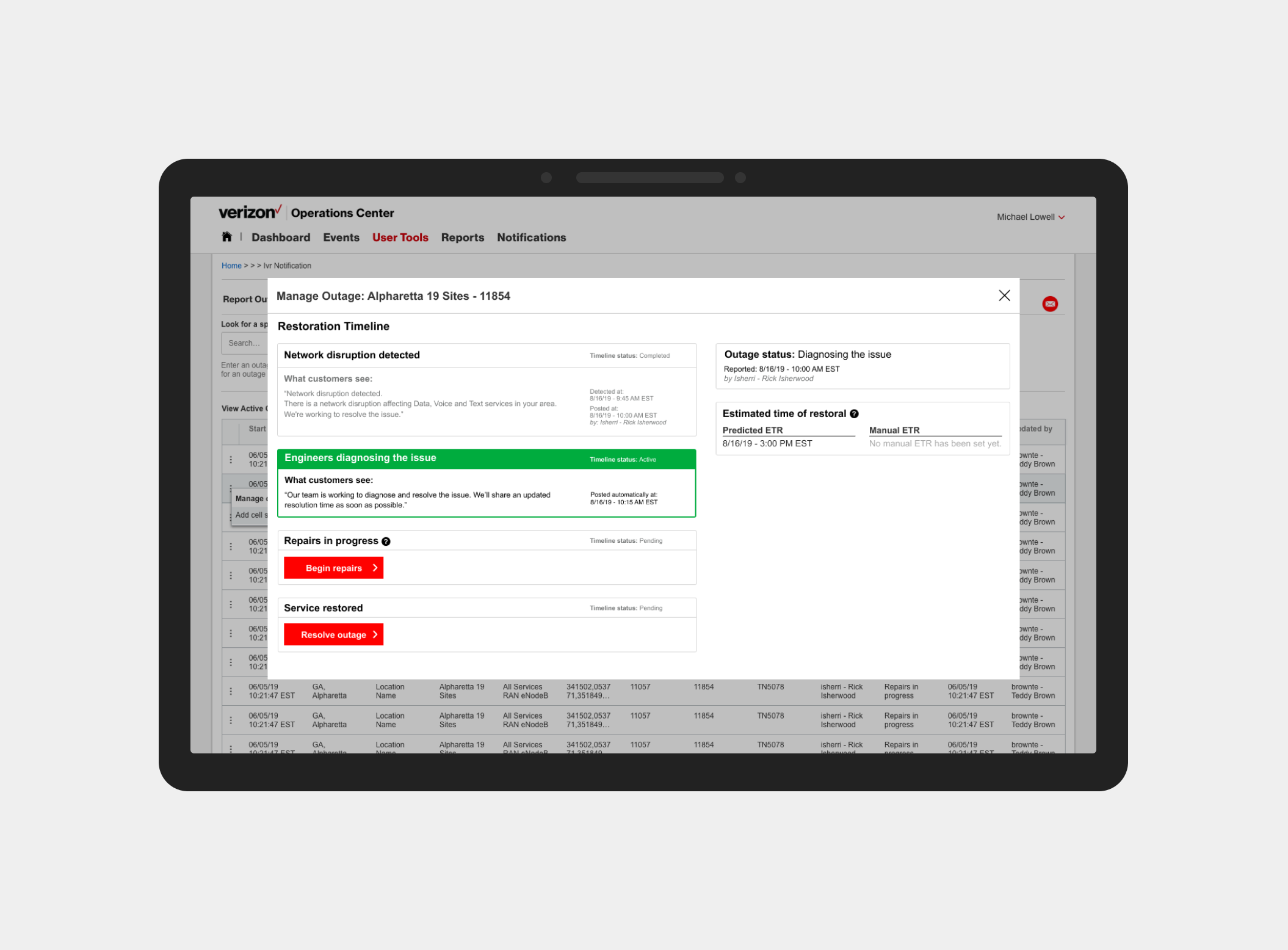Service transparency
COMPANY
Verizon
MY ROLE
Project design lead with a team of Designers (x2), Design Manager, Research partner and a Product Manager.
TIMELINE
2019
Why it matters
Lack of transparency creates a negative customer experience, increasing the likelihood of switching carriers.
Timely and accurate communication will differentiate Verizon from competitors.
Successfully setting customer expectations during disruptions reduces frustration, call-in rates, and the risk of churn.
In order to understand the current state, we gathered inputs across the organization to understand existing teams, processes, and systems for outage communication.
Methods:
- Shadowed network teams
- Facilitated stakeholder interviews
- Conducted customer and Verizon representative surveys
Service blueprint
Uncovered complexity, redundancy and inefficiency in the current outage management process.

User journey
Identified how frustrating and cumbersome it is for customers to troubleshoot and identify network issues.
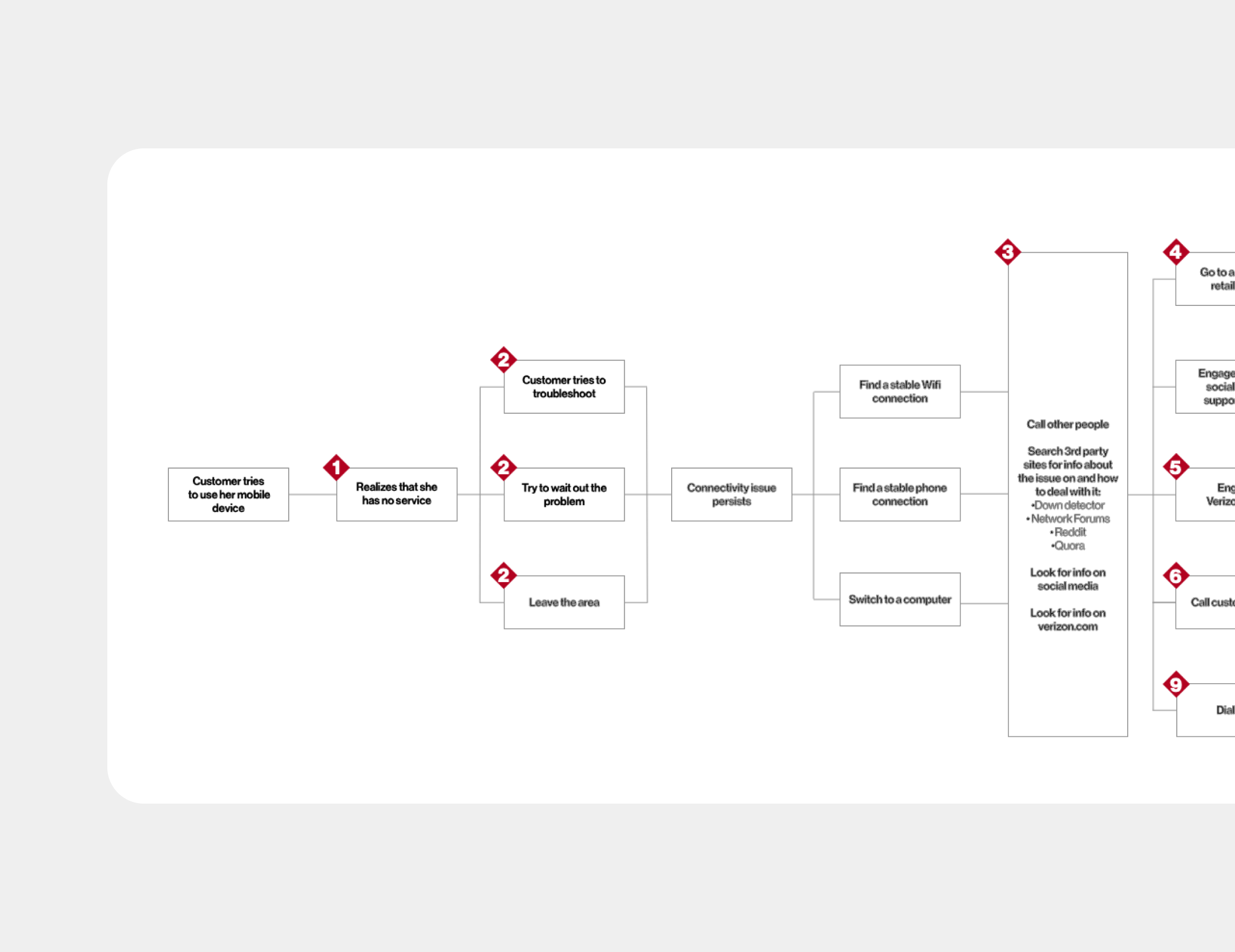
- Who would receive service messaging
- What the message(s) would contain
- Where the messages would live
Messaging timeline
Real-time updates on service restoration progress.
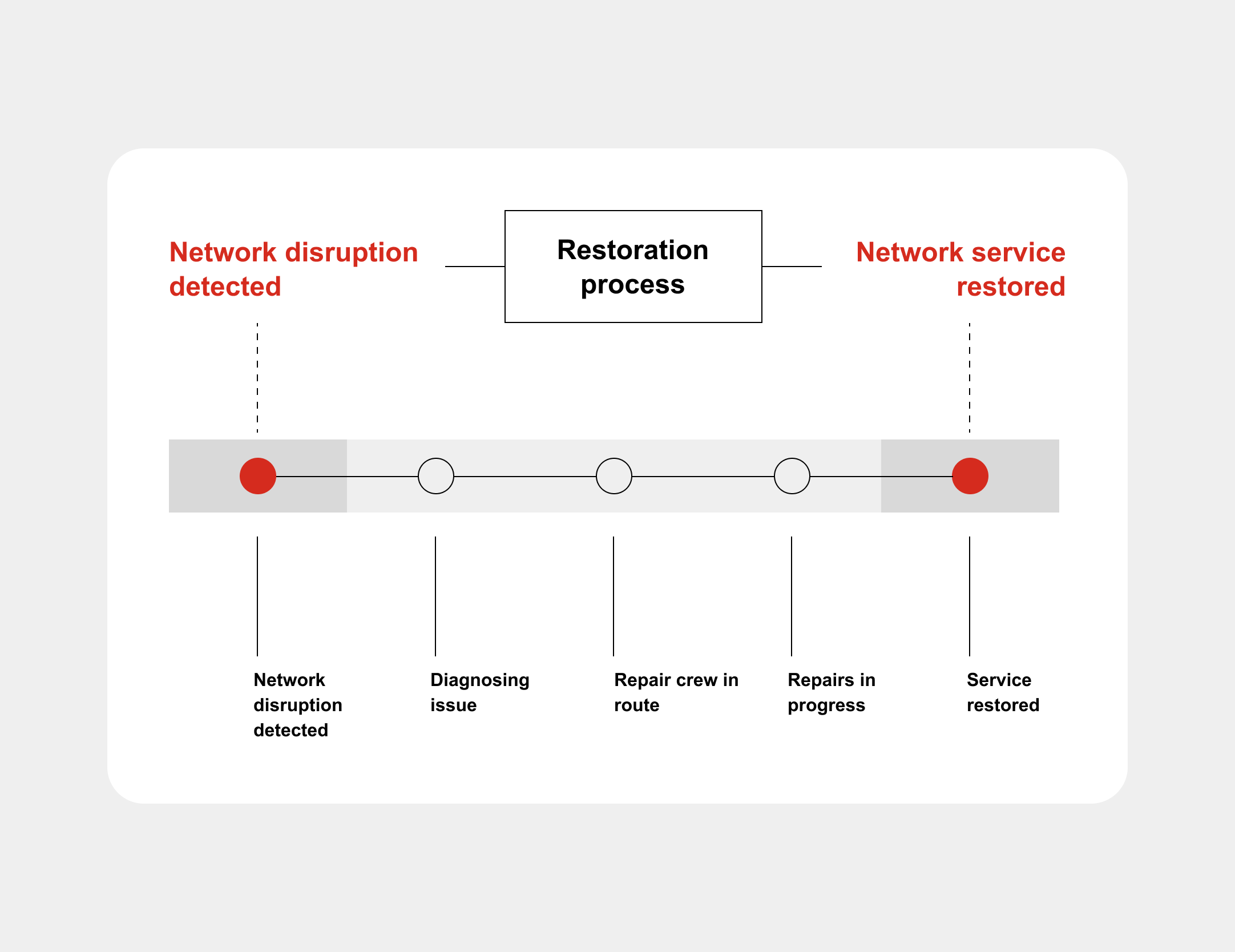
Logic flows
Rules to identify and communicate with impacted customers.
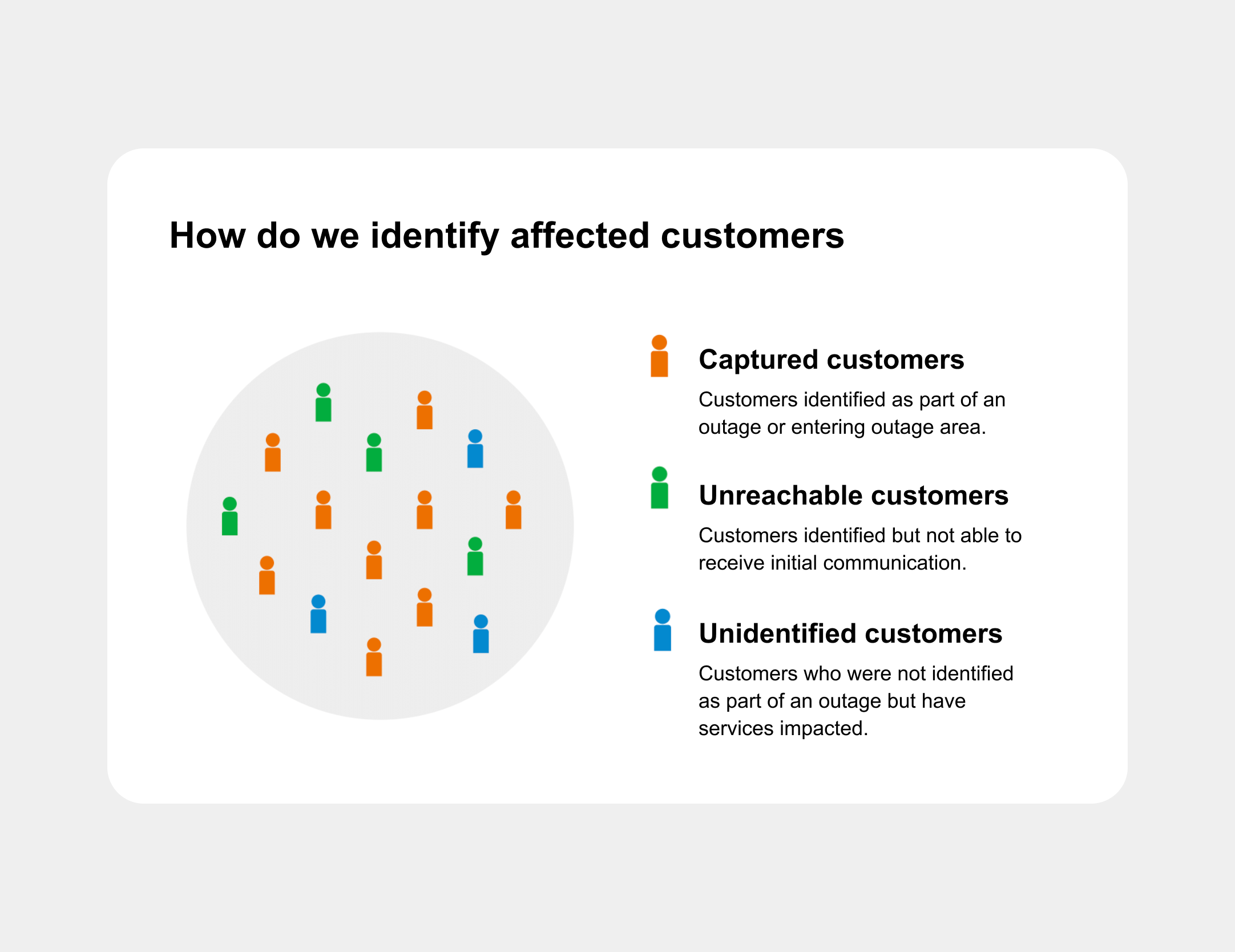
Research approach
- 49 diary studies
- 100 remote unmoderated test
- 1500+ quantitative surveys
Research goals
- To understand the right time, channel and type of information desired by customers to match expectations.
- To validate the information provided removes uncertainty and feels trustworthy.
- To understand whether communication creates a negative or positive brand perception.
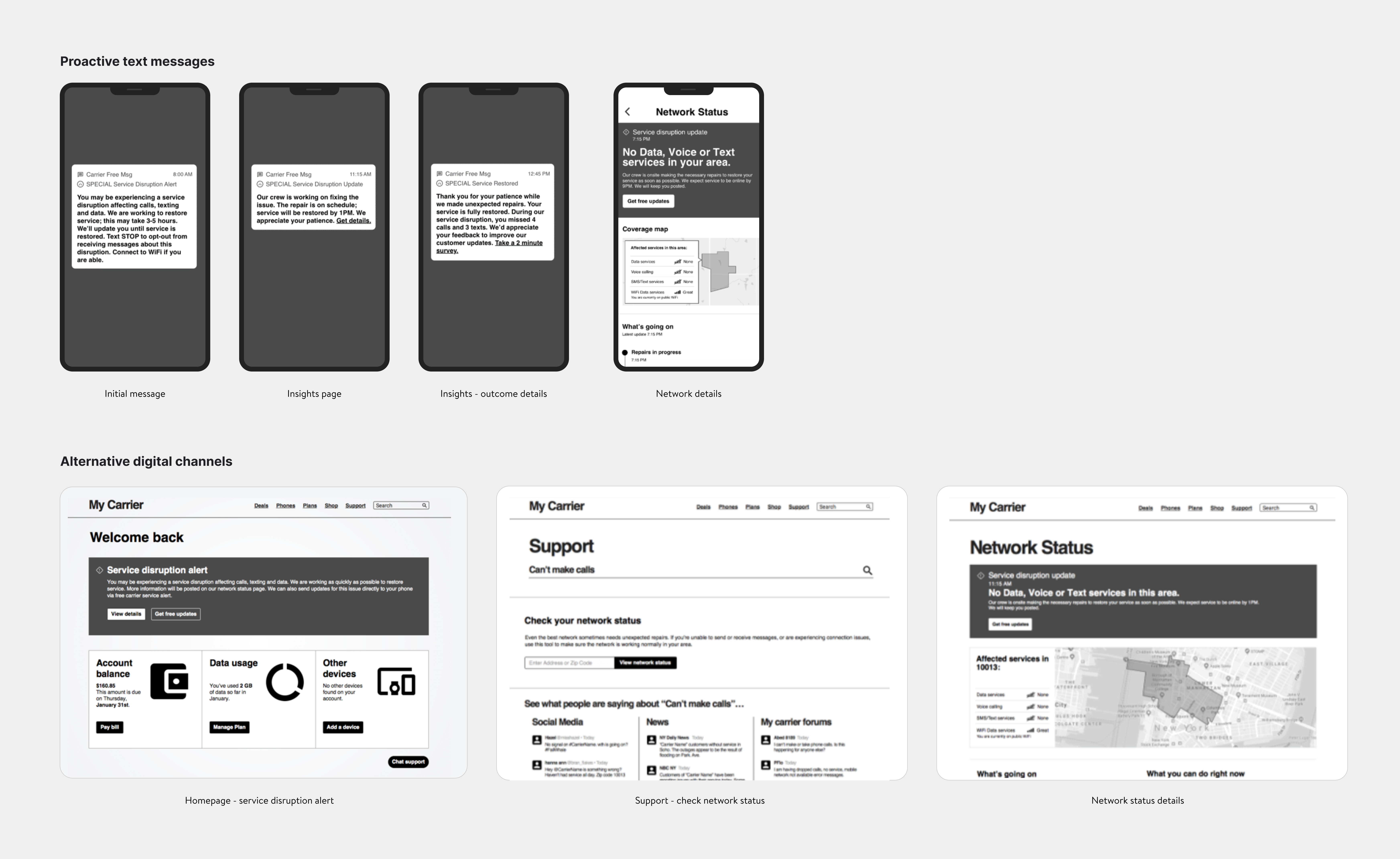
We used the insights to build a case with legal and PR teams to green light the project; a huge win!
Key insights
Guiding principles
What we delivered
- Design for messaging across six customer and rep-facing channels.
- Design for an internal outage management tool to track progress and trigger communications.
- Logic for including outage information in Verizon’s System of Engagement platform.

